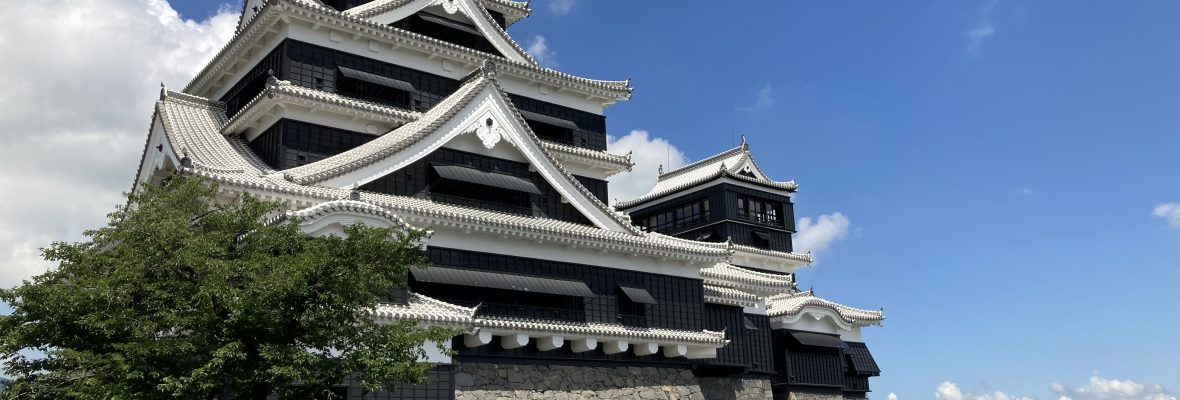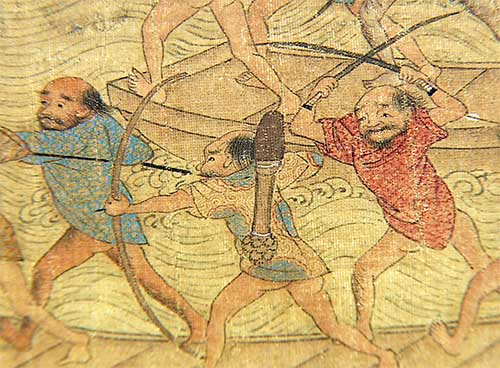Part 4. Final.
So, we finished off part 3 with a Buddhist priest named Anshin on a trade mission to Joseon, claiming to be an ambassador of a daimyo. According to Japanese sources, Anshin belonged to the Hanchu sect of Buddhism, which is also known as the Genju sect of Zen Buddhism in Japanese. The founder of the sect was Zhongfeng Mingben (1263-1323), who lived at the beginning of the Yuan Dynasty, China. Several Japanese monks studied and trained under him and later, formed the Genju sect back in Japan. The sect was a part of Rinka Zen Buddhism and were supported by merchants, peasants as well as the lower levels of the samurai class. Those people preferred simpler benefits to fussy deeper beliefs and the Genju Sect provided it to them.
Koshin Sektei (1481-1564) was a bigger-name within the Genju-Sect. He was the 12th-generation major student of Zhongfeng, and was also the ambassador, or senior envoy, of the mission to Ming in 1539.
Anyway, Koshin and Anshin both worked at Shofuku-ji Temple in Hakata, as can be traced, at least for a certain period. Hakata was a very important trade port in Kyushu, sometimes called the gateway to Japan, which provided a lot of income for both the merchants and local daimyo. Shofuku-ji Temple was founded by Eisai (1141-1215) in 1195 and is basically the oldest Zen temple in Japan. Genju Temple, which was first built at Maidashi near Hakata in 1336 but was incorporated into Shofuku-ji in 1646 by Oga Sohaku (1610-1647). Oga was a trader and initially worked at the Macau branch of his father’s trading company for 8 years. He returned to Hakata and became a businessman with powerful connections with the Kuroda Clan, who were the daimyo ruling Chikuzen Province. (Modern day Fukuoka)
So, what was all that silver used for on those secret trade missions to Joseon? Well, as it turns out, nothing dubious. The silver was mainly used to buy cotton cloth which was regarded as a high-tech product for Japanese people at the time. Hemp cloth was mainly used among ordinary noble people in Japan, and silk cloth was just super luxurious, while cotton cloth was a rather new product.
Cotton was introduced to China during the Tang or Song Dynasty. It was in 1364 that cotton was smuggled into Goryeo (Korea), by Mun Igjeon (1329-1398) as the trade of cotton was forbidden under the rules of the Yuan Dynasty, China. Cotton became a highly sought material which fetched a handsome profit, and the material eventually found its way to Japan bought with silver.
Goryeo, one of the territories of Joseon, was basically a Confucian, agriculturally based society and commerce was despised. Society was based on a bartering system and the main currency was cotton cloth, hemp cloth, and rice also played the role of money. Goryeo’s agriculture based economic system was even more rigid than that under the Edo Shogunate in Japan. The Joseon ruling class had traditional control over the class systems and might have feared the merchant and commercial class developing and increasing their power which they had no control over. In other words, they were very aware of the power precious metals would have on their lives and Korean lives in general. The arrival of Japanese silver initially came in small amounts but by the time Buddhist priests Anshin and Koshin arrived with large amounts of silver it was nearly impossible to stop popular greed for the silver even more. Tons of mined silver produced in Japan plunged East Asia into the modern age of piracy and smuggling controlled by the merchants and nobles of Japan and Korea.
Thank you for reading this short series. The topic of trade, piracy and smuggling is a relatively unknown subject in Japanese history in the English language. Very few people have done any research on the topic and written about it in English. As you will have seen, I have added a reference list to each part. This is by no means a comprehensive list. There were also quite a few Japanese language sites I also searched and learned from but due to the nature of a lot of forgotten history, these sites are not entirely trustworthy to add as a source.
Lastly, I am currently researching a new smaller trade series looking at the Chinese pirate influence in Japan during the 16th century. I look forward to telling this story too.
Cheers
Stuart.
References.
戦国大名の海外交易 (名古屋学院大学総合研究所研究叢書 31) 2019 by 鹿毛敏夫 (The Overseas Trade of the Sengoku Daimyos (Nagoya Gakuin University Research Institute Research Series 31) )2019 by Toshio Kage.
三宅亨, 倭寇と王直, 日本と東アジアのコミュニケーションの総合的研究
Hazard. B, The Formative Years of The Wakō, 1223-63, Monumenta Nipponica , 1967, Vol. 22, No. 3/4 (1967), pp. 260-277, Sophia University
Oka Mihoko, Ed, 2022, War and Trade in Maritime East Asia, Palgrave MacMillan
Zuikei Shuho and Charlotte von Verschuer, Japan’s Foreign Relations 1200 to 1392 A.D.: A Translation from “Zenrin Kokuhōki”, Monumenta Nipponica , Winter, 2002, Vol. 57, No. 4 (Winter, 2002), pp. 413-445, Sofia University.


You must be logged in to post a comment.